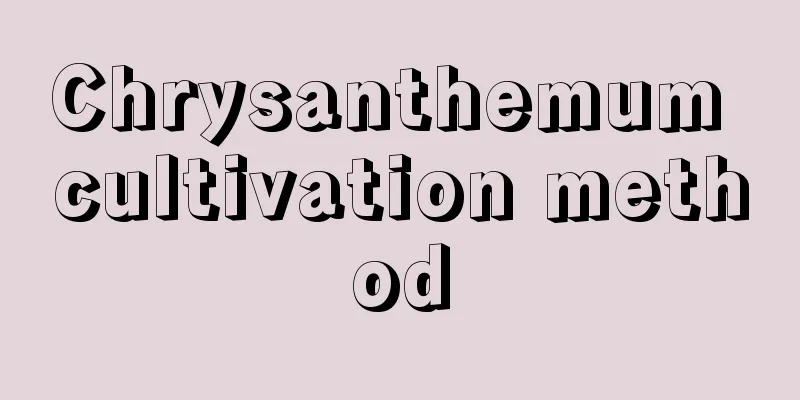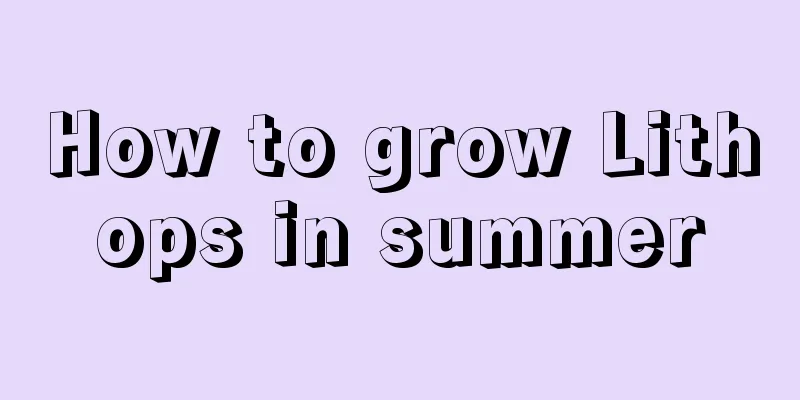What kind of environment does the red spider lily like? What kind of environment is the red spider lily suitable for growing?

1. Environmental requirementsRed spider lily is suitable for growing in a warm semi-shady environment and has a certain degree of cold resistance, but too low temperatures are not conducive to its growth. It will hibernate in summer and the temperature should not exceed 30℃. It does not like strong light and should be placed in a place with scattered light. It should not be too dark, otherwise the plant will be at risk of growing too tall and it will also affect its flowering. 2. Maintenance methods1. Light: Red spider lily prefers partial shade and is afraid of strong light, so it must be placed in a place with soft light, or provide it with appropriate shade. Especially in summer, avoid exposure to the sun. If the light is not strong, you can also let it dry in the sun, which will help the differentiation of flower buds. 2. Temperature: Red spider lily grows faster in warm places, and the temperature should be controlled between 16-28℃. If the temperature exceeds 30℃ in summer, you need to spray water to cool the plants and pay attention to ventilation. The temperature cannot be lower than 1℃ in winter, otherwise you will get frostbite. 3. Soil: Red spider lily does not have high requirements for soil, but it grows better in loose and fertile places. You can prepare potting soil with peat soil, garden soil and perlite by mixing the three in a ratio of 2:2:1. If you want to add some nutrients, you can add an appropriate amount of organic fertilizer. 4. Watering: Red spider lily is a bulbous plant and is afraid of moisture. Too much water can easily lead to its rot. During the growing season, you can water it more often, which will help accelerate development. During the dormant period, you need to reduce watering. In winter, you must strictly control water and avoid watering with cold water. 5. Fertilization: When planting and repotting red spider lilies, you need to add a certain amount of base fertilizer to the soil to continuously provide nutrients for its growth. During the growing season, cake fertilizer water can be applied once every half a month. It must be fully diluted to avoid concentrated fertilizer burning the roots. Growth is slower in summer and winter and no fertilizer is needed. |
<<: What does a green radish seedling look like? How to transplant a green radish seedling
Recommend
Peony flowers bloom like peonies. Plant one in autumn and they will bloom continuously next year.
Is it lush green leaves or colorful flowers? In f...
The flower language of violets, pictures of violets
1. The Flower Language of Violet 1. Eternal beaut...
Is it better to plant spathiphyllum in a large or small pot?
Should I use a large or small pot for the spathip...
The difference between yellow cicada and soft-branch yellow cicada
1. Difference of blades The leaves of Huangchan a...
How many days does coriander grow?
Coriander will generally grow out of the soil on ...
How to fertilize the plant
1. Growth habits They like an environment with hi...
Flowering period control of four-season primrose
The flowering period of four-season primrose When...
How to prune the dense leaves of green radish (with illustrations)
1. Pruning method The growth ability of the green...
How to grow pale snow succulent
1. Soil The choice of soil for growing pale snow ...
Five reasons why azaleas die
1. Poor ventilation If ventilation is poor for a ...
How to manage amaryllis in winter?
Amaryllis is a popular ornamental plant with brig...
Common Pests of Ginkgo and Their Control
Common pests of ginkgo: Ginkgo moth harm In sever...
How to dry persimmons at home? Why do they turn black?
1. How to dry persimmons 1. Selecting persimmons:...
What kind of soil is good for tiger lily
1. Sandy soil It does not strictly require a cert...
What should I do if my crabapple flowers are infested with insects?
1. Reasons If the environment or methods provided...









